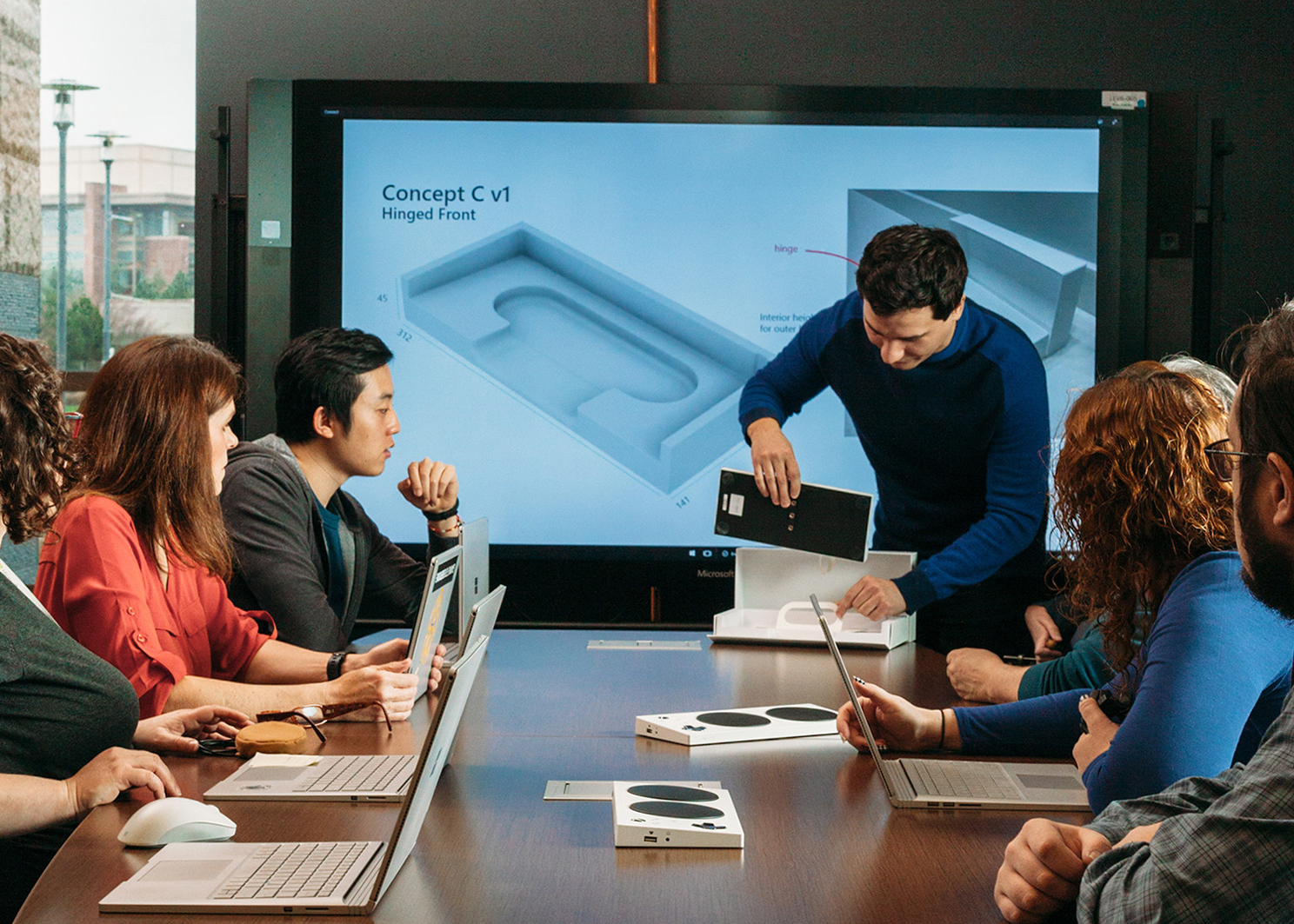October 27, 2019
REFLECTING ON: Microsoft’s accessible package design for the Xbox Adaptive Controller
We’ve all encountered terrible packaging. With twist ties, clam shells, and even tape, many package designs require an infuriating amount of time and tools to access the actual product. You know that feeling you get when you need a pair of scissors to open your new pair of scissors? Well, it has a name: wrap rage. However frustrating wrap rage may be for people with full mobility, these terrible package designs pose even more of a challenge to people with limited mobility. However, packages are seldom designed with this user group in mind.
X-ESSIBILITY
In 2018, Microsoft took action to include all Xbox gamers on the mobility spectrum. They developed the Xbox Adaptive Controller which can be customized with different control devices to create the best interface for each individual user. However, Microsoft realized that their inclusion of people with limited mobility didn’t stop at the design of the controller. In order to be completely accessible, all users need to be able to access the product itself, and the traditional Xbox packaging created obstacles for some users.

RAGE-FREE PACKAGING
After identifying packaging as a pain point for their users, Microsoft curated a team of designers committed to designing packaging which eliminated wrap rage for users of any mobility. Led by one of Microsoft’s packaging designers, Mark Weiser, the team began researching accessible packing precedents without much success. As part of a large corporation, the team saw this as an opportunity to set their own precedent of inclusivity in the industry. Weiser collaborated with the design researcher for the Adaptive Controller, Scott Wang, to consult actual gamers and disability advocates. They gained useful and surprising insight, such as the suggestion to incorporate loops and the frequent complaint that most package designs require teeth to open for limited mobility users. They also found that most users preferred more simple steps to less complicated steps.


Packaging Design Process
The team took this insight into consideration and began brainstorming and rapid prototyping. The base design incorporates input from the gamers and advocates such as the use of loops to open the package and remove smaller parts. The goal was to create a package where the remote controller could be removed using only one hand or arm. After whittling over 100 prototypes down to three, the finalists were put to the test with Microsoft employees with limited mobility. One such employee, Solomon Romney, was born without fingers on his left hand. Since he has less mobility in his left hand, he only used his left hand for the prototype-testing so that he could represent a more extreme user. Romney’s feedback influenced the use of the wide, oval loops in the final design since he found these easier to grip without fingers mobility. The team continued to iterate with this new feedback and continued to test subsequent designs with gamers in the U.S. and U.K.


THE DESIGN!
Finally, the team arrived at a successful, wrap rage-free packaging solution! An employee with limited mobility tested the final design, fully expecting to be unable to open it from his past experiences with packaging. He commented that to his surprise, the package practically fell open for him. The team was excited to see the employee’s reaction, confirming that their solution accomplished their goals to create a positive experience for their end user while simultaneously fitting the ecosystem of other Microsoft Xbox packaging.
The loop-centric design is entirely the result of working directly with the end users throughout the process. Loops are used to remove tape from the outer box, to open the interior box with only one hand, and to grip the paper of the quick start guide which also pulls the controller out of the box. The package is made almost entirely of paper which is less likely to cut skin than plastic and also more environmentally friendly. Overall, the solution was a success and met with a positive response from limited mobility gamers. While the package is only the vehicle for the controller itself, it is a crucial part in making sure the product is delivered through an entirely accessible and autonomous experience.
“I think as a case study of inclusive design, the Xbox Adaptive Controller is going to make a brilliant example of how you do it, and how you include your audience and design with a population, rather than for a population.”
— Solomon Romney, Microsoft employee
MAKING A BIG DIFFERENCE
Most human-centered design projects seem to come from small-scale companies and start-ups. It’s really exciting to see an industry-leading company focusing on inclusivity and a user-oriented design process. Microsoft has discussed ways to use the learnings from the Xbox Adaptive Controller, its packaging, and the overall design process and to continue using these human-centered mindsets in future endeavors.
This post exists within a series of reflections on topics and coursework from my Human-Centered Design class, taught by Marty Maxwell Lane at the University of Arkansas.
Sources: